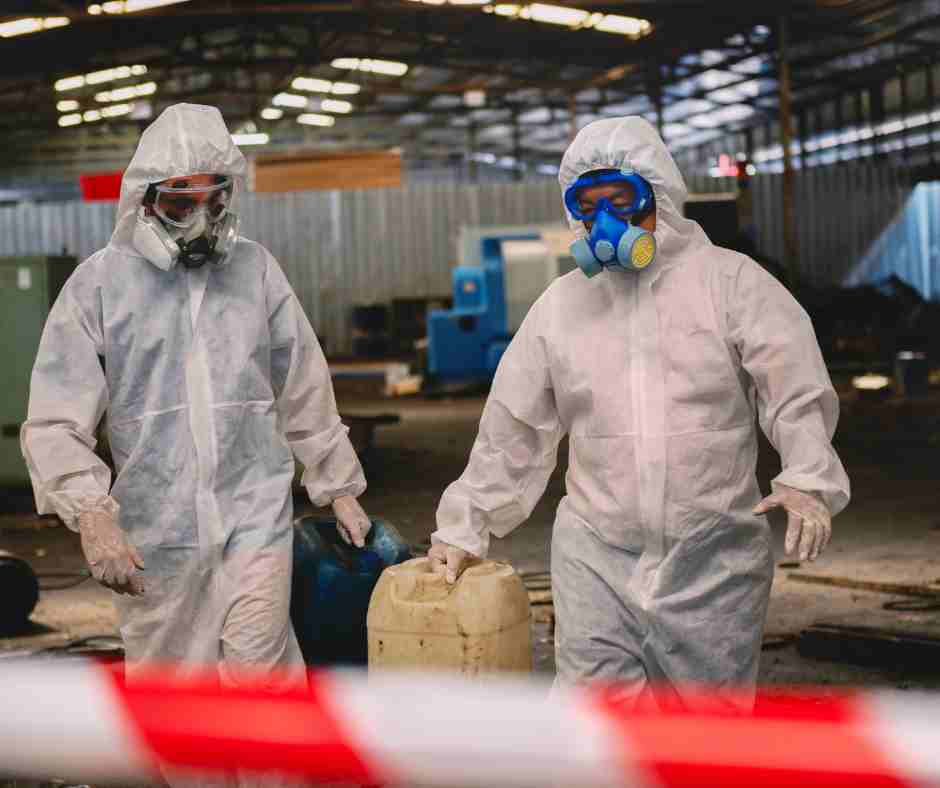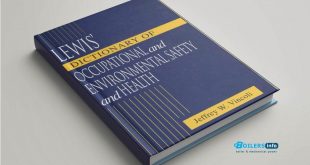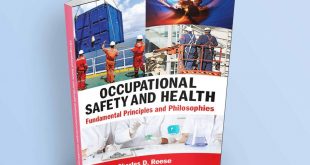Occupational Safety and Health Simplified for the Chemical Industry
The chemical industry involves handling various hazardous materials and chemicals that pose significant risks to worker safety and health. Occupational safety and health (OSH) are critical in ensuring that workers in chemical plants are protected from hazards such as chemical exposure, fires, explosions, and mechanical accidents. By prioritizing OSH practices, the chemical industry can reduce accidents, prevent long-term health issues, and ensure compliance with safety regulations. This guide simplifies the concepts of OSH for the chemical industry, focusing on key strategies and best practices.
Table of Contents
ToggleUnderstanding Occupational Safety and Health in the Chemical Industry
Occupational safety and health in the chemical industry involve managing and mitigating risks associated with the production, handling, and storage of chemicals. Workers in the chemical sector are at risk of exposure to toxic chemicals, hazardous materials, and dangerous equipment. A strong OSH program is essential to minimize these risks and ensure that the workplace remains safe.

The primary goals of OSH in the chemical industry include:
- Preventing chemical-related accidents and injuries
- Reducing exposure to toxic substances
- Complying with industry-specific regulations
- Promoting a culture of safety throughout the organization
Key Components of Occupational Safety and Health in the Chemical Industry
Risk Assessment and Hazard Identification
Risk assessment is a fundamental part of OSH programs in the chemical industry. It involves identifying potential hazards, assessing the risks associated with them, and implementing strategies to control or eliminate these hazards. In chemical plants, common risks include chemical spills, exposure to toxic gases, fire hazards, and mechanical failures.
Key steps in risk assessment:
- Identify chemical hazards (e.g., flammable, explosive, toxic)
- Assess the potential impact of exposure or accidents
- Implement control measures to reduce risk (e.g., ventilation, PPE)
- Continuously review and update risk assessments
Chemical Safety Regulations and Standards
The chemical industry is subject to strict safety regulations to prevent accidents and health risks. Regulatory bodies such as OSHA (Occupational Safety and Health Administration), EPA (Environmental Protection Agency), and the Chemical Safety Board set safety standards that companies must comply with. These regulations cover areas like chemical handling, storage, labeling, and emergency response.
Common safety standards in the chemical industry:
- OSHA’s Process Safety Management (PSM) Standard
- EPA regulations on hazardous waste and emissions
- Globally Harmonized System (GHS) for chemical classification and labeling
- National Fire Protection Association (NFPA) codes for fire safety
Personal Protective Equipment (PPE)
Personal protective equipment (PPE) is essential in safeguarding workers from chemical exposure, burns, and injuries. The right PPE protects against a wide range of chemical hazards, such as corrosive substances, fumes, and fire risks. It is crucial that employers provide adequate PPE and train workers in its proper use.
Common PPE in the chemical industry:
- Chemical-resistant gloves and suits
- Respirators and face shields
- Eye protection (goggles or face shields)
- Fire-resistant clothing and boots
- Hard hats and hearing protection
Safe Handling and Storage of Chemicals
Proper chemical handling and storage are critical to preventing accidents, spills, and exposures. Hazardous chemicals should be stored according to their specific requirements, such as temperature, humidity, and ventilation. Workers must be trained in proper handling procedures, such as how to safely mix, transfer, and dispose of chemicals.
Key practices for safe handling and storage:
- Labeling chemicals according to GHS standards
- Storing chemicals in appropriate containers and locations
- Maintaining proper ventilation to reduce airborne hazards
- Following standard operating procedures (SOPs) for chemical transfers and waste disposal
Safety Training for Workers
Safety training is essential to ensure that workers are prepared to recognize and mitigate risks in the chemical industry. Workers must be educated on the safe handling of chemicals, the use of protective equipment, emergency procedures, and how to respond in the event of a spill, fire, or accident.
Key training areas include:
- Chemical safety, handling, and storage
- Emergency response and first aid
- Fire and explosion prevention
- Hazardous material spill containment
- PPE usage and maintenance
Emergency Response and Spill Management
In the chemical industry, accidents such as chemical spills, leaks, and fires can occur at any time. An effective emergency response plan is vital for mitigating damage and protecting workers. The response plan should include clear procedures for evacuating personnel, containing spills, and notifying emergency services.
Key components of emergency response:
- Well-defined spill containment and cleanup procedures
- Regular fire drills and emergency simulations
- Availability of emergency equipment (e.g., fire extinguishers, first aid kits)
- Training workers on emergency evacuation procedures
- Coordination with local emergency responders
Process Safety Management (PSM)
Process safety management (PSM) is a critical aspect of OSH in the chemical industry. PSM focuses on preventing major accidents related to the release of hazardous chemicals. This includes ensuring that chemical processes are designed and operated safely, and that equipment is properly maintained and inspected.
Key elements of PSM include:
- Hazard analysis and risk assessment of chemical processes
- Design and implementation of safety features in processes (e.g., pressure relief systems)
- Regular safety audits and inspections
- Training workers in safe operating procedures and emergency response
- Maintenance of process safety information and documentation
Common Hazards in the Chemical Industry
Chemical Exposure
One of the most significant risks in the chemical industry is exposure to hazardous chemicals. Long-term exposure to toxic chemicals can cause serious health problems, including respiratory issues, skin irritation, and cancer. It is essential to implement control measures such as ventilation, PPE, and training to reduce exposure.
Control measures for chemical exposure:
- Use of fume hoods and local exhaust ventilation
- PPE such as respirators and chemical-resistant clothing
- Monitoring air quality and chemical concentrations
- Substitution of hazardous chemicals with safer alternatives
Fire and Explosion Hazards
Fires and explosions are common risks in the chemical industry, especially when handling flammable chemicals. The presence of volatile chemicals and high temperatures can create dangerous situations. Proper storage, handling procedures, and fire safety measures are essential to preventing such incidents.
Control measures for fire and explosion hazards:
- Proper chemical storage and segregation
- Installation of fire suppression systems (e.g., sprinklers, fire extinguishers)
- Monitoring of electrical equipment for overheating
- Emergency response training for fire-related incidents
Mechanical Hazards
In chemical plants, machinery is used extensively in the production process. Mechanical failures, such as equipment malfunctions or improper maintenance, can lead to accidents, injuries, or chemical spills. Regular equipment inspections and maintenance are necessary to ensure the safe operation of machinery.
Control measures for mechanical hazards:
- Regular inspection and maintenance of equipment
- Use of safety interlocks and guards on machinery
- Proper training for workers in equipment operation and maintenance
- Implementing predictive maintenance systems
Ergonomic Hazards
Workers in the chemical industry may experience ergonomic risks due to repetitive tasks or awkward postures. Long-term exposure to these risks can lead to musculoskeletal disorders (MSDs). Designing workstations to minimize physical strain and providing ergonomic tools can help reduce these injuries.
Control measures for ergonomic hazards:
- Redesigning workstations to reduce strain
- Providing adjustable chairs, desks, and tools
- Implementing job rotation to avoid repetitive tasks
- Training workers in proper lifting and posture techniques
Conclusion
Occupational safety and health are vital components of maintaining a safe and productive workplace in the chemical industry. By identifying hazards, implementing control measures, and providing ongoing training, employers can protect workers from potential risks and ensure compliance with safety regulations. A strong safety culture, combined with effective risk management and emergency preparedness, can help prevent accidents, reduce health risks, and foster a productive work environment. Through continuous effort and adherence to best practices, the chemical industry can prioritize the safety and well-being of its workers while maintaining operational efficiency.
 Boilersinfo Boiler and Mechanical Power Digital Library
Boilersinfo Boiler and Mechanical Power Digital Library





